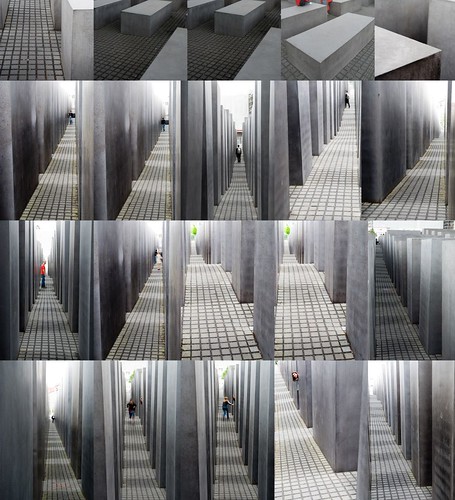The traditional monument is understood by its symbolic imagery, by what it represents. It is not understood in time, but in an instant in space; it is seen and understood simultaneously. Even in traditional architectures such as labyrinths and mazes, there is a space-time continuum between experience and knowing; one has a goal to work one’s way in or out.
In this monument there is no goal, no end, no working one’s way in or out. The duration of an individual’s experience of it grants no further understanding, since understanding is impossible. The time of the monument, its duration from top surface to ground, is disjoined from the time of experience. In this context, there is no nostalgia, no memory of the past, only the living memory of the individual experience. Here, we can only know the past through its manifestation in the present.
by P. Eisenman
“In architecture the diagram is historically understood in two ways: as an explanatory or analytical device and as a generative device. Although it is often argued that the diagram is a postrepresentational form, in instances of explanation and analysis the diagram is a form of representation. In an analytical role, the diagram represents in a different way from a sketch or a plan of a building. For example a diagram attempts to uncover latent structures of organization, like the nine-square, even though it is not a conventional structure itself. As a generative device in a process of design the diagram is also a form of representation. But unlike traditional forms of representation, the diagram as a generator is a mediation between a palpable object, a real building, and what can be called architecture’s interiority.” (Eisenman 1999, Diagram Diaries)


